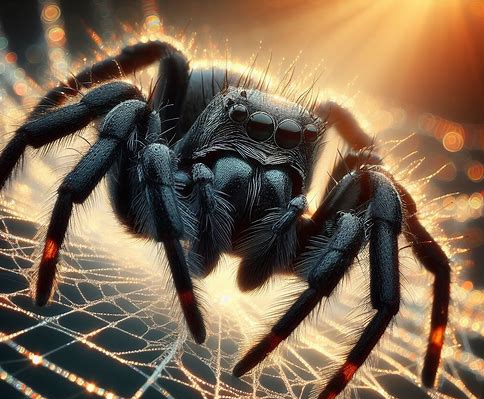Black House Spiders (Badumna insignis) is a widespread urban pest in Colorado; they usually live in isolated areas like window frames, sheds, and beneath eaves. Though they seem to prefer human homes, these arachnids can also be found thriving in natural settings such as rocky crevices and hollow tree trunks, demonstrating their adaptability to various locations throughout the state.
Knowing the Identity of Black House Spiders in Colorado
A Glimpse into Their Habitat
Primarily found in urban settings, Black House Spiders have adapted remarkably well to human environments. They are typically spotted in less disturbed areas of a home, such as garages, sheds, and basements. However, their presence isn’t limited to human residences. These spiders can also be found in natural settings, weaving their webs in hollow trees or rocky nooks, showcasing their versatility in habitat preference.
Characteristics: More Than Just a Dark Hue
The scientific name for Black House Spiders is Badumna insignis, and they are colored from dark brown to black. They have a unique appearance because to the tiny, silky hairs covering their body. Black house spider females can grow up to 18 mm in length, making them typically larger than male counterparts. Their webs, a tangle of silk spun into a funnel-shaped hideaway where they spend most of their time, are a crucial characteristic that helps identify them.
Behavior and Lifestyle of Black House Spiders in Colorado
Masters of the Web
These spiders are well known for their ability to construct webs. Their webs serve as both dwellings and traps for gullible prey. Black House Spiders are mostly nocturnal and wait for insects to get entangled in their webs. This hunting strategy minimizes their need to leave the safety of their web, thus avoiding potential predators.
Seasonal Patterns: When to Spot Them
The activity of Black House Spiders in Colorado peaks during the warmer months. They use this time to develop their territories and perform their mating rituals. They typically become less active during the winter months and hide inside their webs to save energy.
Coexisting with Black House Spiders: Safety and Prevention
Debunking the Danger Myth
A common concern is the potential danger these spiders pose. In reality, Black House Spiders are not aggressive towards humans. In most cases, bites only happen when the spider is aroused. Although painful, bite symptoms are not fatal and can include nausea, edema, or minor pain.
Keeping Them Away
To prevent an infestation, focus on eliminating their preferred habitats around your home. Regular cleaning, sealing cracks, and ensuring window screens are intact can significantly reduce their presence. Additionally, minimizing outdoor lighting can decrease the insects that serve as their food source, thus making your home less attractive to these spiders.
The Ecological Impact of Black House Spiders in Colorado
A Crucial Role in Nature
Insect population control is greatly aided by black house spiders. They contribute to the ecosystem’s balance because they are innate predators. As such, their presence ought to be viewed as advantageous rather than concerning.
Interaction with Colorado’s Wildlife
These spiders are both predators and prey in the food chain. They provide food for birds and larger insects, and they also help manage insect populations. The ecosystems of Colorado need this balance to be healthy.
Dispelling Myths and Providing Advice
It’s critical to dispel the myths associated with black house spiders. Because of our limited knowledge, they are frequently unnecessarily feared. It’s advisable to avoid disturbing a Black House Spider if you come across one. If removal is required, the best course of action is to gently remove the spider.
Conclusion
In conclusion, despite being a scary and frequently misunderstood species, Colorado’s Black House Spider is an interesting and vital component of the region’s ecology. Because of their unusual appearance, special ability to make webs, and nocturnal hunting schedule, these spiders play a major role in regulating insect populations and preserving ecological equilibrium. Even though they usually pose little threat to people, knowledge of their habitat and behavior might promote a more secure and peaceful coexistence. Coloradans may enjoy the presence of these wonderful species without needless risk or worry by taking easy preventive precautions and honoring their natural function in the environment.
